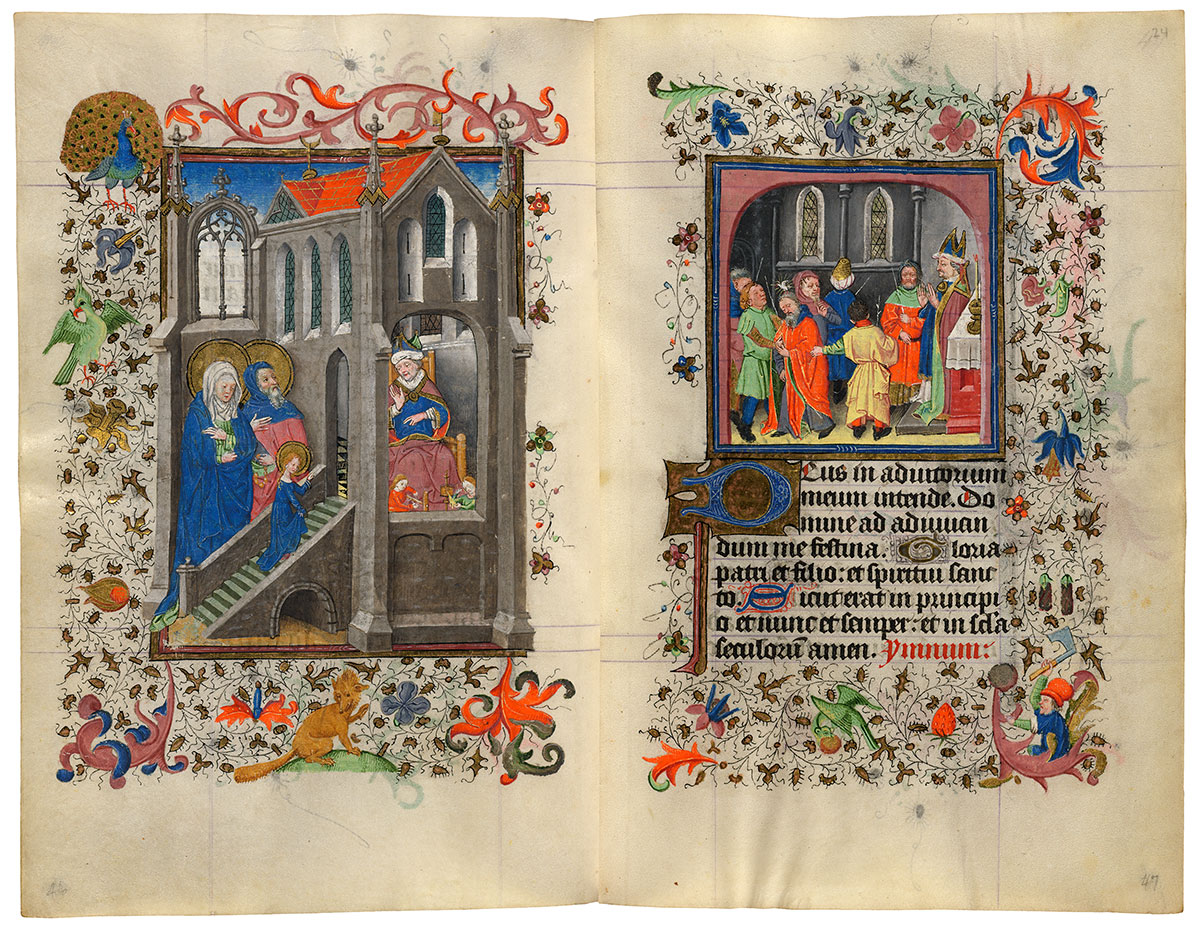
Presentation of the Virgin in the Temple
Joseph Designated as the Husband of the Virgin
Purchased on the Belle da Costa Greene Fund with the assistance of the Fellows and with special assistance of Mrs. Frederick B. Adams, Sr., Mrs. Robert Charles, Mr. Laurens M. Hamilton, The Heineman Foundation, Mrs. Donald F. Hyde, Mrs. Jacob M. Kaplan, Mrs. John Kean, Mr. Paul Mellon, Mr. and Mrs. Charles F. Morgan, Mr. Lessing J. Rosenwald, Mr. and Mrs. August H. Schilling, Mrs. Herbert N. Straus, Mrs. Landon K. Thorne, Mrs. Alan Valentine, Mr. and Mrs. Arnold Whitridge, and Miss Julia P. Wightman, 1970
The beginning of each of the eight Hours of the Virgin was originally marked, as here, with a juxtaposition of a full- and a half-page miniature. Such elaborate pictorial treatment of the individual Hours is one of the hallmarks of Catherine of Cleves's prayer book. On the left, the Virgin Mary ascends the steps of the temple, where she will join two maidens engaged in weaving and spinning. On the right, the elderly Joseph is designated as Mary's husband. The Virgin's suitors—with the exception of Joseph, above whose head floats the Dove of the Holy Spirit—are depicted with withered rods. A reluctant contestant, Joseph had tried to withdraw but was prevented by his fellow suitors.
Hours of the Virgin
The heart of every Book of Hours is the series of prayers called the Hours of the Virgin. Each Hour is composed of psalms plus hymns, biblical readings, and short phrases (antiphons, versicles, and responses). Ideally, these eight Hours were prayed throughout the course of the day:
| Matins and Lauds | at night or upon rising |
| Prime (first Hour) | at 6:00 a.m. |
| Terce (third Hour) | at 9:00 a.m. |
| Sext (sixth Hour) | at noon |
| Nones (ninth Hour) | at 3:00 p.m. |
| Vespers (evensong) | in the early evening |
| Compline | before retiring. |
The Hours of the Virgin date back to at least the ninth century. By the late twelfth century, the Hours appeared in Psalters, prayer books popular with laypeople. With a rising economy and the growth of the merchant class, the thirteenth century saw an increase in lay literacy. By the middle of the century, the Hours of the Virgin "spun off" from the Psalter and formed the core of the laypeople's prayer book, the Book of Hours.
The Virgin Mary is, of course, not mentioned in the numerous psalms of the Old Testament that comprise much of the Hours. Framing the psalms, however, are prayers that offer a mystical interpretation of the psalms and reveal the role played by the Virgin in mankind's salvation.
Image courtesy of Faksimile Verlag Luzern
